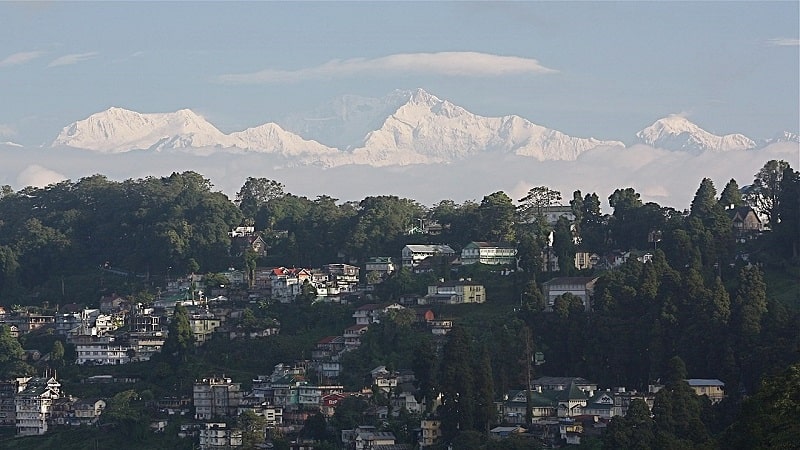The central province or state, the literal meaning of Madhya Pradesh, is the heart of India, and it is the most populated state and the second biggest in India. Even in the absence of international boundaries or coastline, this is one of India’s most amazing places to visit. Home to several low-lying ranges like the Vindhya Range, Kaimur Hills, Maikala Hills, Mahadeo Hills, and Satpura Hills. River valleys of the Narmada and Tapti, Chambal, Mahanadi, Mainganga, and Son cover the length and breadth of the state.
The National Park is also known for its flora and fauna, with multiple thick forested covers home to the rare barasingha, Royal Bengal tigers, gaurs, and more. The region is pure bliss for nature lovers, with as many as nine National Parks, twenty-five wildlife sanctuaries, and six Tiger reserves. Some of the popular ones are Kanha National Park, Bandhavgarh National Park, National Chambal Sanctuary, Satpura National Park, and many more. Madhya Pradesh or M.P. also has a proud cultural history with arts and architecture at its core. The famous Bhimbeta rock shelters, the Sanchi Stupa, Bagh Caves, Udaygiri Caves, world-famous Khajuraho Temple, and the Gwalior Fort. Besides, M.P. is the abode of the Omkareshwar Temple, one of the twelve jyotirlingas in the country. It is also home to sacred pilgrimage places like Ujjain, also known as the ‘City of Temples’, Chitrakoot, and Amarkantak.
Must-visit stop-overs in Madhya Pradesh
Omkareshwar - the God's abode
Situated on the Om-shaped Mandhata island with the energetic Narmada by its side, the Omkareshwar is the abode of Lord Shiva. The island is in the Khandwa district, about 4 km long, and pilgrims can approach the holy spot using boats or crossing the overhanging bridge on foot.
It is one of the twelve Dwadasa Jyotirlingas in India. It is one of the most sacred places for Hindus. Besides the religious significance of the place, the natural landscape makes it a classical beauty. The Lord made himself visible here as a fiery illuminated column as per the local tale. There are varied stories about the origin of Omkareshwar. One legend says that Vindya, the Lord of the Vindhya mountain range, created the holy shape of Om and made the lingam from sand and clay. As per the Hindu scriptures, a war between the Devas and Danavas compelled Shiva to appear and win the war for the Devas. Another version is related to King Mandhata, where Shiva appeared when he was pleased with the severe penance of the King and his sons. The temple is positioned right at the confluence of rivers Narmada and Kaveri. The original complex got destroyed during the Tughlaq invasion and was later re-built by Ahilyabai Holkar.
1. Places to visit: Omkareshwar Parikrama, Mamleshwar Jyortinga Temple, Ahilya Ghat, Omkar Mandhata Temple, and Kajal Rani Caves.
2. Best time to visit: You can plan a visit for the ultimate experience here between October and March. Dusshera is a wonderful time to be present here amidst all the festivities.

Source: Jothishi.com
Maheshwar - Holy and historical
As per Hindu literature, Maheswar is the other name of Lord Shiva. Located in the Khargone district, on the northern shores of the pious River Narmada, the city has been identified by historians as the ancient town of Mahismati.
The temple town’s origin goes back to the days of Ravana, who created a Shivalinga here to worship the Lord. However, the Shivalinga was washed away when King Sahasrarjun released the water of the Narmada. Ravana was made a prisoner, and the King had placed ten lamps on Ravana’s head and one in his hand. Eleven lamps are lighted every day in the Sahasrarjun Temple to keep the legend alive. Much later, when Rajmata Ahila Devi Holkar ruled the area, she added numerous temples, forts, and ghats, which offer a sneak peek to the modern-day traveler into the historical era.
1. Places to visit: the fifth-century handloom weaving center, Ahilya Bai Fort, Akhileshwar Temple, Rajwada, and the alluring Narmada Ghat.
2. Best time to visit: the right time to visit this temple town is during the winters, between October and March.

Source: Goheritagerun.com
Satpura National Park - Amidst the natural greens
The Satpura National Park was formed in 1981 to preserve the at-risk tiger species living in the thickly forested region of the Satpura Range. Covering a total area of 1427 sq km, the National Park extends from an altitude of 300 meters to 1,352 meters. The National Park covers the sanctuaries at Pachmarhi and Bori. The rich flora consists of Sal and Teak trees and medicinal herbs, while animal lovers can treat their eyes with tiger spottings. Besides, you can view the Dholes or the wild dog, Gaur or the Indian Bison, wild boars, spotted deer, sloth bear, Sambhar, Chowsingha, or Four-horned antelopes, crocodiles, langurs, and more. The unique attractions at the Satpura National Park are the White Bison and Indian Giant Squirrel. Besides, bird lovers can indulge in bird watching for hours.
Many cottages and treehouses offer unique experiences to visitors. There are jeep and night safaris and boat rides to enter the heart of the forest.
Best time to visit: Visiting Satpura National Park can be fun between October and June. Winters, however, is the best time because you can get to see your heart’s fill of migratory birds.

Source: Tourmyindia.com
Gwalior - Regal and mystique
The city of Gwalior has a rich historical background. Gwalior literally means the home to cows or buffaloes. It is because the city is close to Mathura and is part of the Braj area and culture. The city is the pride home to the Gwalior Fort, standing tall and proud and known as the Gibraltor of India. This ancient fort also called the ‘Pearl amongst fortresses in India,’ dates back to the eighth century perched on the peak of an undulated terrain overlooking the city
The striking ambience of the city resonates with its medieval culture that has passed through the hands of multiple dynasties, including Tomars, Mughals, Marathas, and finally, the Scindias. You can witness innumerable regal structures that add royalty to the landscape as you traverse through the city. It is also home to India’s brilliant musician Tansen’s tomb. The city comes alive with music beats during the five-day Tansen Samaroh held during December every year. Another special feature of the city is that it is the first place on the Earth where the number ‘zero’ was written – at the Chhaturbhuj Temple.
1. Places to visit: The Gwalior Fort, The Chaturbhuj Temple, Bateshwar, Gujari Mahal, Datia Palace, and the historic city of Orchha on the banks of River Betwa.
2. Best time to visit: Summers are very hot in Gwalior, and winters, comparatively, are pleasant. Therefore, the right time to visit this city is between September and March.

Source: India.com
Khajuraho - Preaching spirituality and celebrating life.
Khajuraho is popular worldwide for its famed Group of Temples that is also a UNESCO accredited World Heritage Site. Located in the Chhatarpur district, the temple complex was the creation of the Chandela Dynasty. Historians believe that the temple complex was built around the tenth century and is one of the biggest showcases of Nagara-style art and architecture. The craftsmanship is intricate, detailed, expressive, and beautifully executed.
While the exterior of the temples brims with sculptures depicting dancers, couples in union, deities, etc., the inside radiate spiritual teachings, the richly sculpted temples, about twenty in number, are divided into three groups – East, West, and South belonging to two different religions – Jains and Hindus.
1. Places to visit: Khajuraho Group of Temples, Dulhadev Temple, State Museum of Tribal and Folk Art, Raneh Falls, and Chaturbhuj Temple.
2. Best time to visit: Book your hotel between October and March if you plan to visit Khajuraho. The best time to visit, though, is February, when the Khajuraho Dance Festival is held, where a grand extravagance of music and dance awaits you.

Source: Time of India
Bhimbhetka
This archaeological site is believed to have been part of human civilization ever since the Stone Age, the Paleolithic, and Mesolithic ages. Located about 46km from the capital city of Bhopal, this World Heritage Site has been excavated extensively, exhibiting traces of human life. There are 750 rock shelters or caves spread over seven hills. The inner walls of the structures are adorned with paintings and geometric figures, colored with vegetable colors, some dating back to a lakh years back. While some of the art forms date back to at least thirty thousand years, some of the figures are from the medieval period. The paintings showcase the period and the evolution of mankind, showcasing different occupational interests like agriculture, hunting, dancing, etc. Of all the rock caves, only a handful few are open for visitors at present.
1. Places to visit: The Rock Cave, Bhojpur, Hoshangabad, and Bhopal.
2. Best time to visit: October to March is ideal for visiting these ancient caves surrounded by dense vegetation.

Source: FabHotels
Conclusion
The heart of India is a bountiful place – an extravagant display of culture, history, sanctity, and natural beauty. A visit here is truly exhilarating and enriching!















